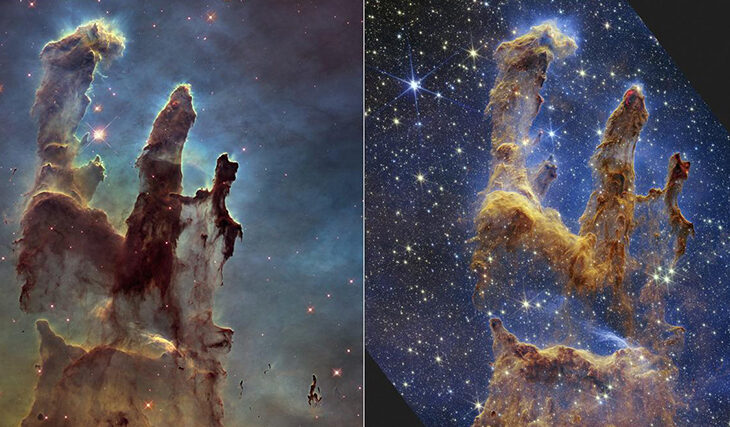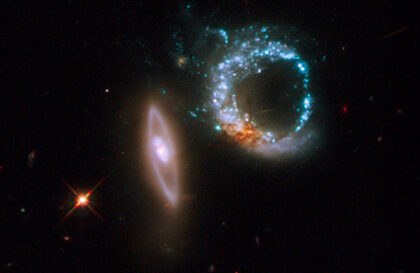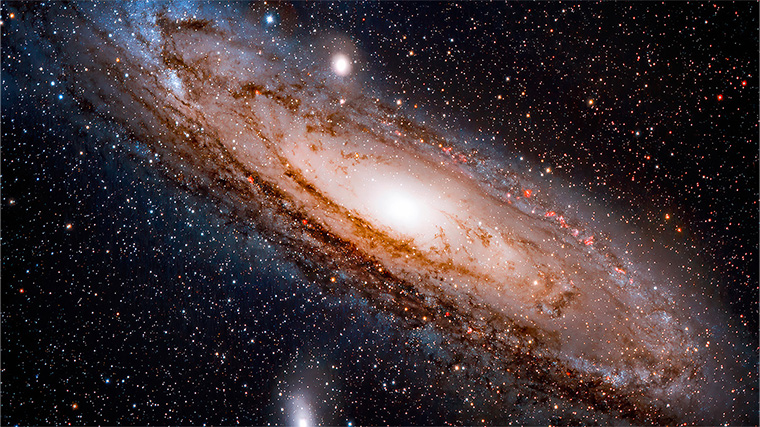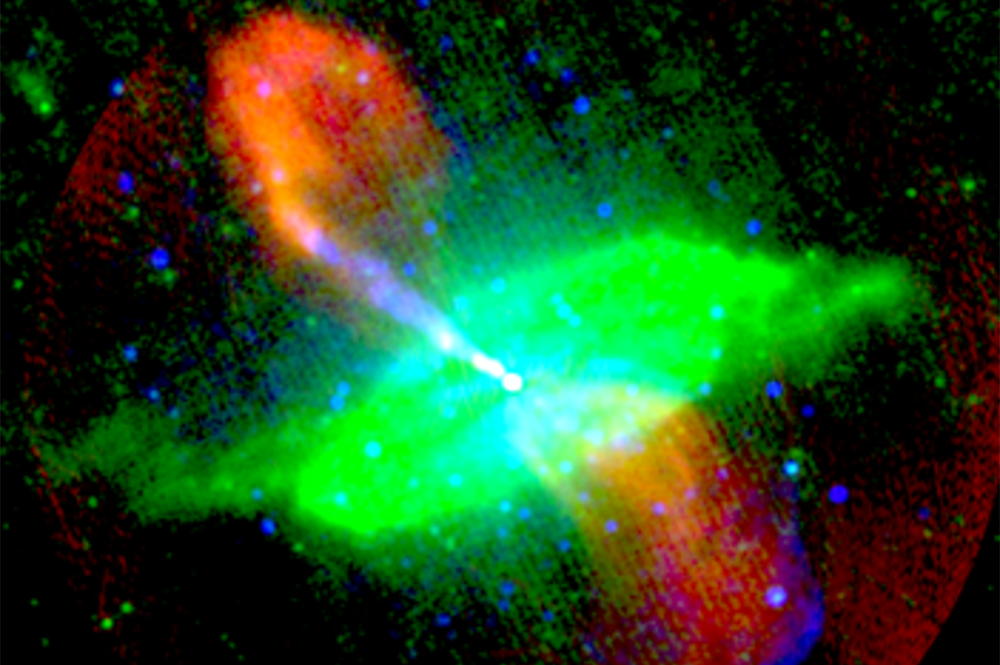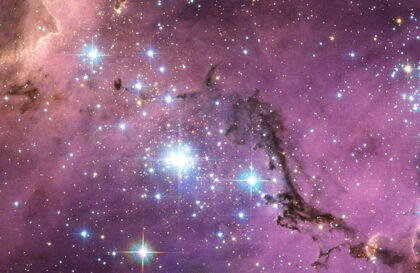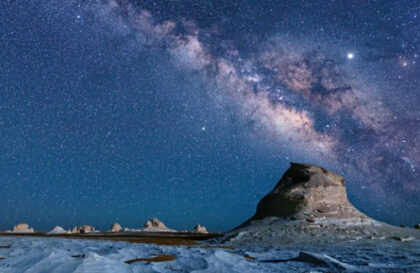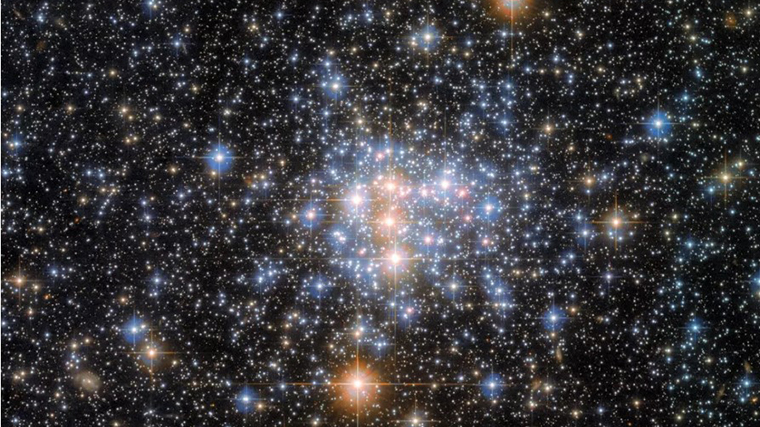This composite image shows the Pillars of Creation taken by NASA’s Hubble Space Telescope in 2014 (left) and NASA’s James Webb Space Telescope in 2022 (right). | Photo credit: AP/PTI (Space Telescope Institute Public Affairs)
Pillars of creation. What it is?
The pillars are composed of cold molecular hydrogen and dust, which are destroyed by the photoevaporation of ultraviolet light relative to nearby and hot stars. The leftmost pillar is about four light-years long. The finger-like protrusions at the top of the clouds are larger than the Solar System and are made visible by shadows of gas globules (EGGs) that evaporate and shield the gas behind them from intense ultraviolet flux. EGGs are incubators for new stars.
The pillars, which resemble elephant trunks, are a small region within the great Eagle Nebula, which is 6,500 light-years away.
Along the edges of the pillars pass wavy lines, similar to lava. These are emissions from stars that are still forming. Young stars periodically emit supersonic jets that can interact with material inside the clouds. Sometimes this also results in bow shocks that can form wavy patterns like a boat when moving through water. These young stars are estimated to be only a few hundred thousand years old and will continue to form for millions of years.
A translucent layer of gas closes our view of the deeper universe. Plus, the dust is illuminated by the collective light of a dense “group” of stars that have broken out of the pillars. It’s like standing in a well-lit room and looking out a window—the interior light reflects off the pane, obscuring the scene outside and, in turn, illuminating what’s going on at the party inside.
Who discovered the Pillars of Creation?
These “elephant trunks” were discovered by John Charles Duncan in 1920 on a plate made with the 60-inch telescope of the Mount Wilson Observatory. The picture taken on April 1, 1995, by the Hubble Space Telescope was named one of the ten best Hubble pictures. This picture, taken by Hubble, consists of 32 different images.
The Pillars of Creation in the Eagle Nebula taken by the Hubble Space Telescope in 1995
There are no more pillars of creation
However, the Spitzer Space Telescope detected a cloud of dust on the outskirts of the Pillars of Creation, which could hypothetically be a shock wave caused by a supernova. The appearance of the cloud suggests that a supernova shock wave destroyed the Pillars of Creation 6,000 years ago. Considering the distance of approximately 7,000 light-years between Earth and the Pillars of Creation, this would mean that they have already been destroyed. But since light travels at a finite speed, this destruction should be visible from Earth in about 1,000 years.
This interpretation of hot dust is disputed by an astronomer who was not involved in Spitzer’s observations, who argues that the supernova should have produced stronger radio and X-ray emission than observed, and that winds from massive stars could have heated the dust instead. If so, the Pillars of Creation will undergo a more gradual erosion.
Star photos of the Pillars of Creation
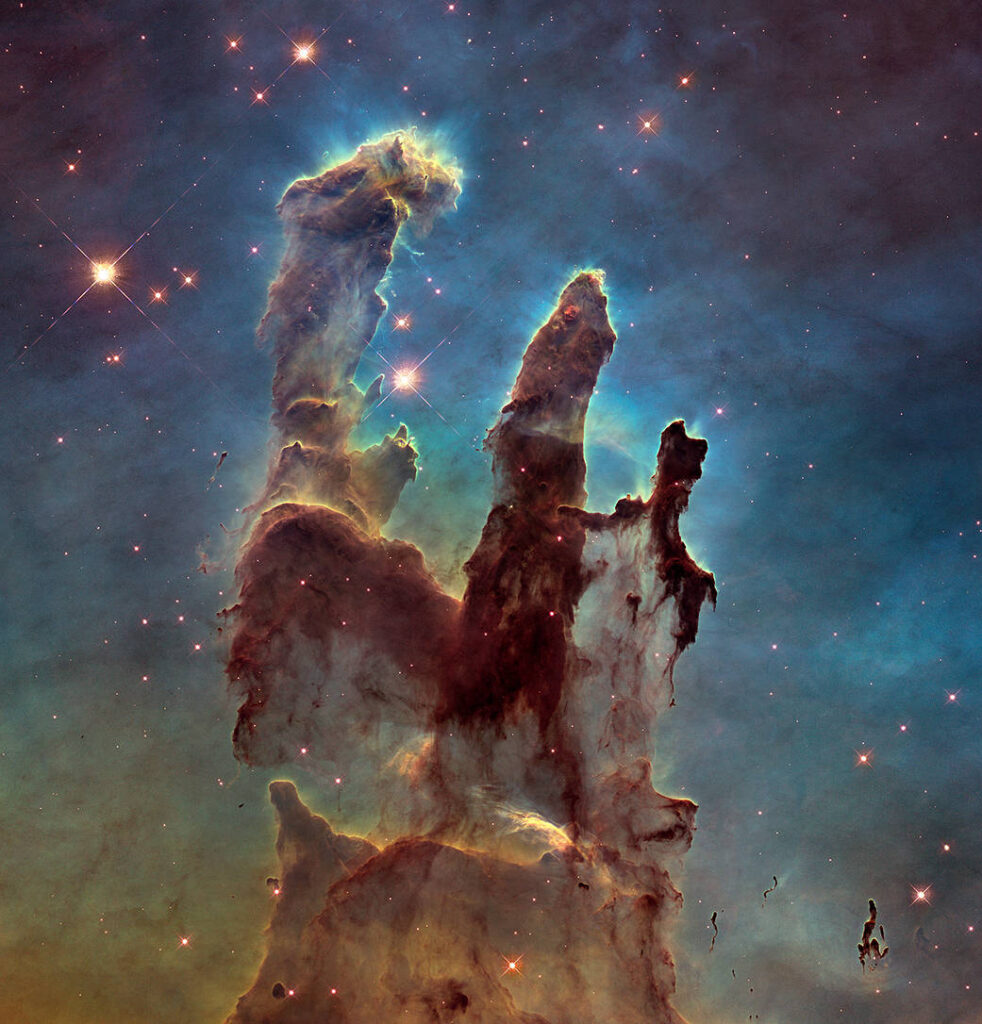
Credits: NASA, ESA and the Hubble Heritage Team (STScI/AURA)
This photo was taken in 2022. The Pillars of Creation are shown in a kaleidoscope of colors in a near-infrared image taken by NASA’s James Webb Space Telescope’s Near-Infrared Camera (NIRCam). The pillars look like arches and spiers rising above the desert landscape but are filled with translucent gas and dust and are constantly changing.
The pillars of creation still evaporate
Using MUSE, an instrument on ESO’s Very Large Telescope (VLT), astronomers have achieved the first full 3D view of the famous Pillars of Creation in the Eagle Nebula known as Messier 16. Fresh observations shed light on how the iconic object’s varied dusty structures are distributed in space, revealing many new details, including a previously unnoticed jet from a young star. Intense radiation and stellar winds from the bright stars in this cluster eventually formed the Pillars of Creation from dust.
Credits: NASA/ESA Hubble Space Telescope image of the famous Pillars of Creation
MUSE discovered that the upper end of the left Pillar of Creation is facing towards us and glows brighter than the other pillars, which are facing away. This is due to the influence of the star NGC 6611, as well as young O and B stars, on this pillar.
The researchers also discovered two new nascent stars in the left and middle columns, as well as a previously undetected jet of a young star.
The Pillars of Creation are being destroyed due to the intense radiation from neighboring bright stars. MUSE was able to measure their rate of evaporation and estimate that they are about three million years away from extinction, given that they are losing 70 times the mass of the Sun every million years. Their current mass is about 200 times the mass of the Sun.
Banner image:
AP/PTI (Space Telescope Institute Public Affairs)
This composite image shows the Pillars of Creation taken by
NASA’s Hubble Space Telescope in 2014 (left) and NASA’s James Webb Space Telescope in 2022 (right)
Image credit:
https://www.thehindu.com
https://en.wikipedia.org
https://www.nasa.gov
https://www.eso.org
